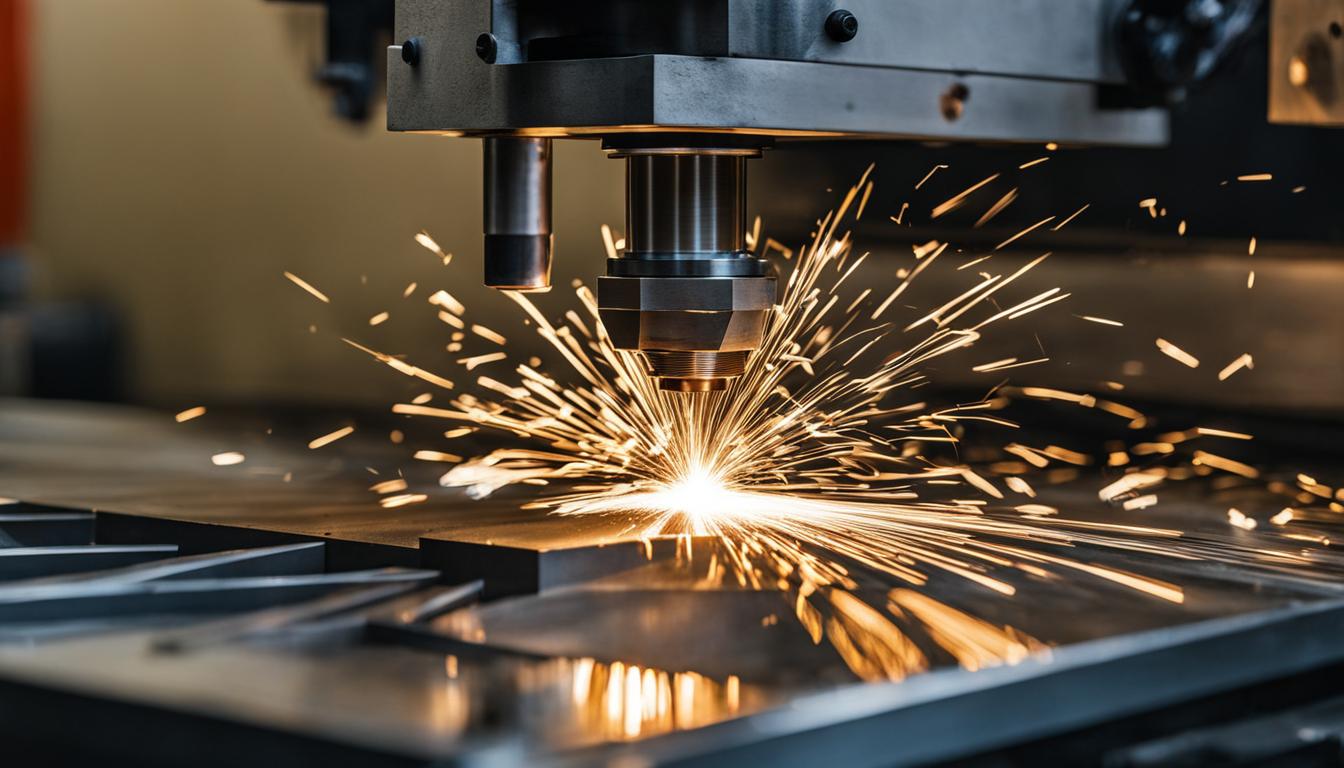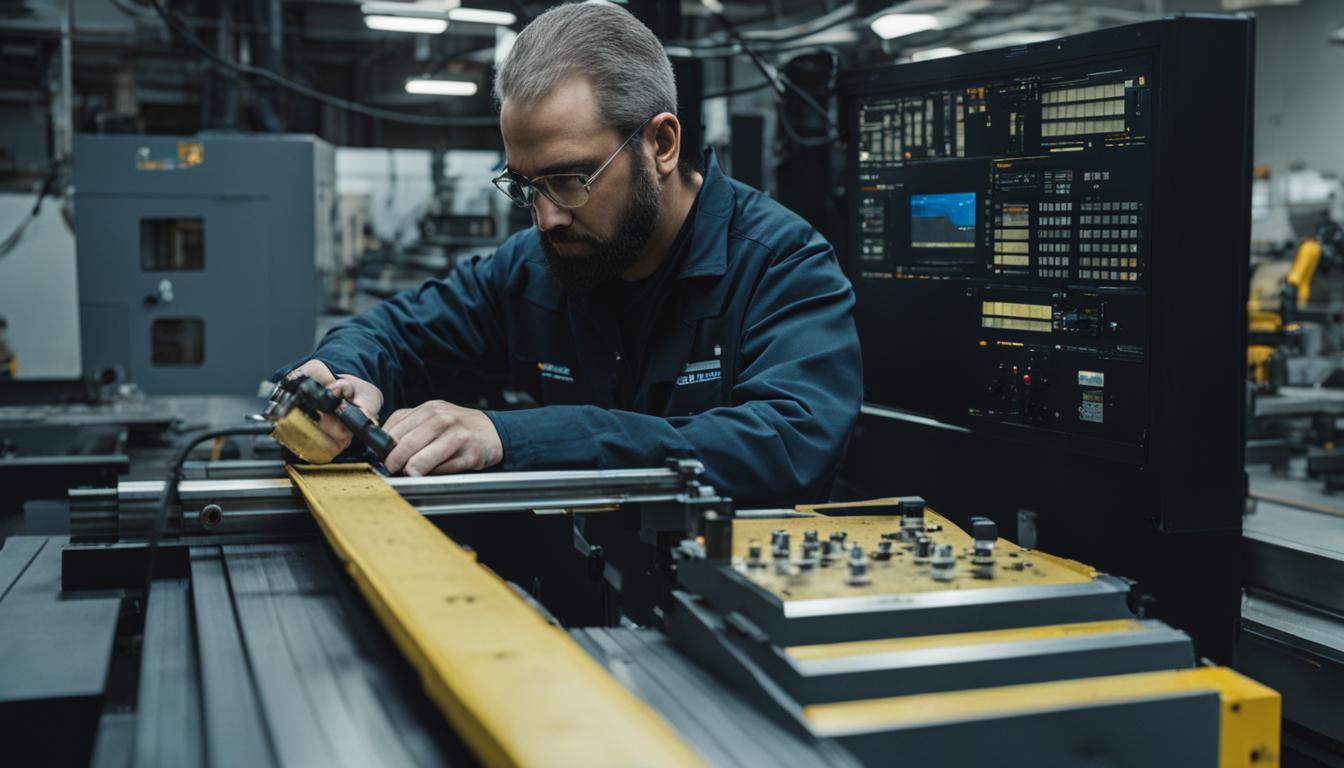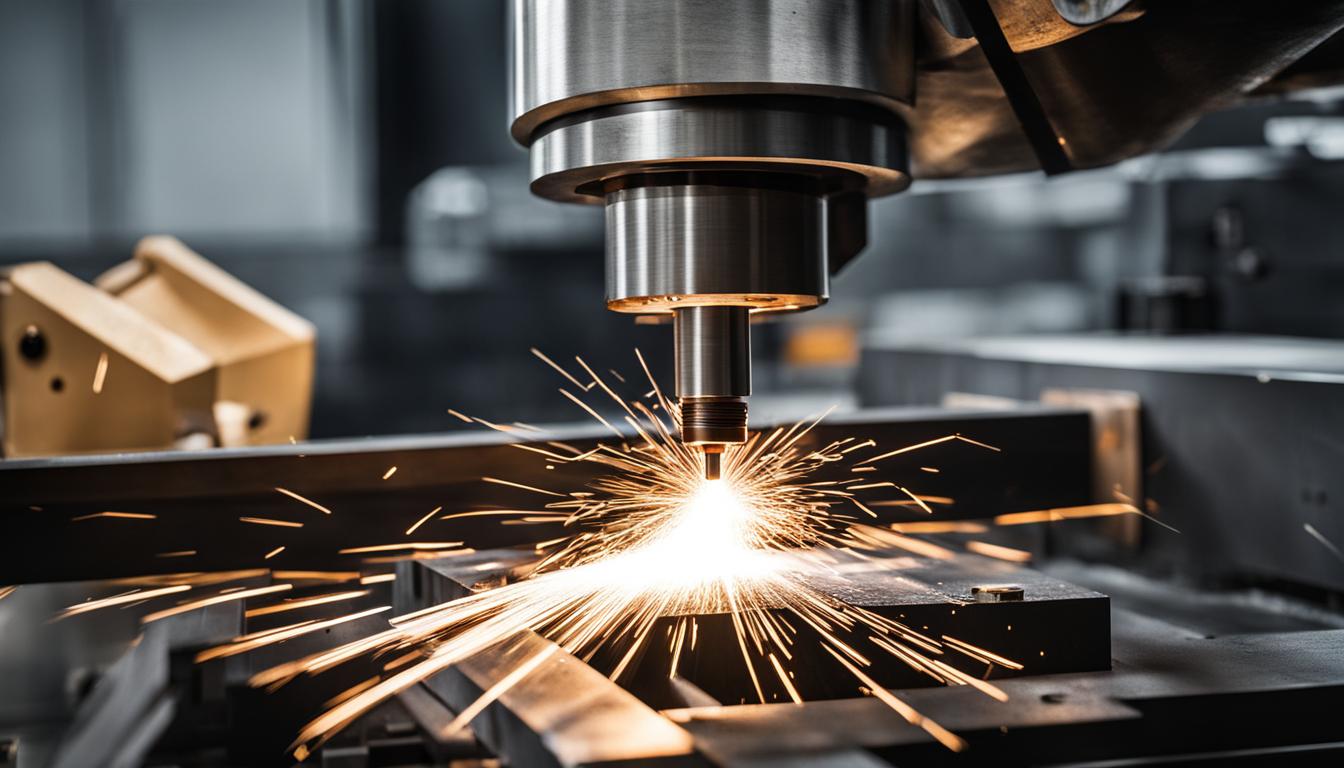CNC machining projects offer a wide range of possibilities for both hobbyists and professionals, from creating custom parts to crafting intricate decorative items. Popular ideas include manufacturing custom car parts, producing personalized jewelry, crafting unique home decor items, and fabricating specialized tools. Best practices for successful CNC machining projects involve careful planning, precise design work, and proper material selection.
It’s crucial to start with a detailed 3D model or CAD drawing, ensuring all dimensions and tolerances are accurately specified. Choosing the right material for your project is essential, considering factors such as durability, machinability, and cost. Proper tool selection and optimizing cutting parameters are vital for achieving high-quality results and extending tool life. Regular machine maintenance, including calibration and lubrication, helps ensure consistent accuracy and longevity of your CNC equipment.
Safety should always be a top priority, with operators wearing appropriate personal protective equipment and following proper machine operation procedures. By adhering to these best practices and exploring creative project ideas, CNC enthusiasts can unlock the full potential of this versatile manufacturing technology.
- CNC machining projects offer endless possibilities for precision manufacturing.
- CNC machines are versatile and can be used in various industries, such as metal fabrication and rapid prototyping.
- The combination of advanced technology and skilled craftsmanship ensures high accuracy and quality.
- CNC machining is essential in the world of custom machining and DIY projects.
- Stay tuned for exciting project ideas and best practices in the next sections!
Beginner-Friendly CNC Machining Projects
Are you a beginner in CNC machining looking for rewarding projects to kickstart your journey? Look no further! There are plenty of beginner machining projects that are simple yet provide a great learning experience. These projects allow you to gain hands-on experience while honing your skills in CNC machining.
Here are some examples of beginner-friendly projects:
- Create Fixture Plates for Precise Alignment
- Build a Handy Gadget for Indicating Parts in the Lathe Chuck
- Make a Dodecahedron as a Cool Decorative Piece
These projects not only help you understand the basics of CNC machining but also provide tangible results that showcase your progress. Whether you are interested in precision alignment, improving lathe operations, or creating decorative pieces, these beginner projects are perfect for hobby machinists.
Getting hands-on experience with these projects will familiarize you with the essential techniques and processes involved in CNC machining. You’ll learn about tooling, material selection, programming, and operating CNC machines.
So, grab your tools and start your CNC machining journey with these beginner-friendly projects. The possibilities are endless!
Practical Tools for the Workshop
When it comes to CNC machining, it’s not just about creating decorative items. There are also practical projects that can greatly enhance the efficiency of a workshop. These projects not only showcase the utility of CNC machining but also provide valuable tools to improve productivity and precision.
Mill Table Tramming Aids
One practical project that can make a significant difference in the accuracy of milling is creating mill table tramming aids. These aids help in aligning the milling machine’s table perpendicular to the spindle axis. By ensuring proper alignment, you can achieve precise and consistent milling results. This project is especially useful for those working on metal lathe projects or CNC milling projects.
Mill Vise Caddy
Working with heavy vises in a milling machine can be challenging, especially when it comes to their handling and positioning. Building a mill vise caddy can make this task much easier. A mill vise caddy provides a convenient and secure way to transport and position heavy vises without straining your back or compromising the safety of the operation. This project is applicable to CNC milling projects.
Coolant Collar for Nozzle Tracking
In CNC milling and turning projects, coolant plays a crucial role in maintaining optimal temperatures and removing chips from the cutting area. To ensure precise coolant delivery, creating a coolant collar is a practical project to consider. The coolant collar provides a controlled path for the coolant nozzle, ensuring it accurately tracks the tool’s position. This project is beneficial for both metal lathe projects and CNC milling projects.
These practical tools not only enhance the workshop experience but also contribute to the overall efficiency and accuracy of CNC machining projects. Whether you’re working on metal lathe projects, CNC milling projects, or CNC turning projects, incorporating these tools into your workshop can significantly improve your results.
Advanced CNC Machining Projects
Once you have mastered the basics of CNC machining, it’s time to take your skills to the next level with advanced projects that will truly showcase your expertise. These projects require a higher level of skill, precision, and creativity, allowing you to create unique and impressive pieces. Whether you’re looking to challenge yourself or explore new possibilities, these advanced CNC machining projects will push your capabilities to new heights.
Chess Set
Few things demonstrate the artistry of CNC machining like a beautifully crafted chess set. From intricately designed pieces to a meticulously carved board, creating a chess set allows you to combine precision machining with artistic flair. Whether you choose to work with metal, wood, or another material, the end result will be a captivating and functional masterpiece.
Intricate Metal Engravings
If you’re passionate about metalworking, creating intricate engravings on metal is a project that will truly showcase your skills. Whether you’re engraving a decorative plate, a personalized gift, or an industrial component, CNC machining allows for precise and consistent results. With the ability to create intricate designs and patterns, you can turn a simple piece of metal into a work of art.
Metal Stand for a Laptop
In today’s digital age, laptop stands are becoming increasingly popular for ergonomic and convenience reasons. Designing and crafting a metal stand for a laptop allows you to combine functionality with style. CNC machining enables you to create a stand that perfectly fits your laptop, incorporating adjustable features, cable management channels, and a sleek design. Not only will you have a practical accessory for your workspace, but you’ll also have a piece that stands out and attracts attention.

These advanced CNC machining projects provide an opportunity to challenge yourself, showcase your skills, and create impressive pieces that go beyond the ordinary. Whether it’s a chess set, intricate metal engravings, or a metal stand for a laptop, these projects will captivate and inspire. Embrace the possibilities of CNC machining and let your creativity flourish.
Overcoming the Skills Gap in CNC Programming
While automation has helped mitigate the skills gap in CNC machining, there is still a shortage of skilled CNC programmers. The development of Computer-Aided Manufacturing (CAM) systems has made programming more accessible, thanks to their increasing sophistication and intuitive user interfaces. However, to bridge the skills gap and ensure the continued growth of precision machining and CNC manufacturing, it is crucial to focus on training and cultivating skilled CNC programmers.
CNC programmers play a vital role in translating design specifications into machine instructions that drive the CNC equipment. They need a strong foundation in manufacturing principles, an understanding of toolpath simulation, and expertise in utilizing CAM systems effectively. By leveraging CAM systems, programmers can generate accurate toolpaths, optimize cutting strategies, and simulate machining operations to identify any potential errors or collisions before production begins.
Training programs should aim to develop the necessary technical skills, such as programming knowledge and proficiency in CAM software. Additionally, cultivating problem-solving and critical thinking abilities is essential for CNC programmers to adapt to ever-changing manufacturing requirements and optimize production processes.
Investing in the development of CNC programmers is crucial for the industry’s future success. By providing comprehensive training and continuing education opportunities, CNC machine shops and manufacturing companies can ensure a skilled workforce proficient in precision machining, CAM systems, and toolpath simulation.
Remember, the skills gap in CNC programming can be addressed with a strategic focus on training and development. By nurturing the next generation of CNC programmers, we can meet the demands of CNC manufacturing and drive innovation in the industry.
| Benefit | Explanation |
|---|---|
| Improved Efficiency | Skilled CNC programmers can optimize cutting strategies, reduce cycle times, and maximize machine utilization, leading to improved efficiency in CNC manufacturing. |
| Enhanced Precision | Proficient CNC programmers can generate accurate toolpaths and simulate machining operations, minimizing the risk of errors and ensuring precision in the final product. |
| Reduced Downtime | By programming CNC equipment effectively, skilled CNC programmers can minimize downtime by avoiding crashes and collisions during machining operations. |
| Innovation and Optimization | Well-trained CNC programmers can leverage advanced features in CAM systems and explore innovative machining techniques to optimize production processes. |
Investing in the development of skilled CNC programmers is an investment in the future of CNC manufacturing. By bridging the skills gap and ensuring a proficient workforce, the industry can continue to thrive and push the boundaries of precision machining.
Making CNC Machine Tool Programming Easier
CNC machine tool programming can be complex and challenging. However, there are ways to make it easier and more effective. By following industry best practices and utilizing the right tools, machinists can streamline the programming process and improve productivity.
Documenting Tool Assemblies, Machine Setups, and CNC Programs
Fully documenting tool assemblies, machine setups, and CNC programs is crucial for ensuring accuracy and efficiency in CNC machining. By creating comprehensive documentation, machinists can easily reference and replicate successful setups and programs, saving time and reducing errors. This documentation should include detailed information on tool dimensions, work offsets, cutting parameters, and other critical data.

Setting up CAM Software to Maximize Capabilities
CAM software plays a vital role in CNC machine tool programming. It offers advanced features that simplify and automate the coding process, enhancing both efficiency and precision. To make the most of CAM software, machinists should take the time to fully understand its capabilities and customize the settings accordingly. This includes setting up tool libraries, defining machining strategies, and optimizing toolpaths for specific projects. By harnessing the power of CAM software, machinists can significantly improve their programming workflow.
Standardizing Programming and Machining Practices
Standardization is key to improving CNC machine tool programming. By establishing common practices and procedures, machinists can reduce variability and increase efficiency. This includes using consistent naming conventions for files and variables, adopting standardized tooling and fixturing setups, and implementing proven machining techniques. When everyone follows the same practices, it becomes easier to troubleshoot issues, share programs between machines, and train new operators.
Understanding Cutting Tools and Material Applications
A thorough understanding of cutting tools and their applications is essential for effective CNC machine tool programming. Different materials require specific cutting tools and speeds to achieve optimal results. Machinists should familiarize themselves with the characteristics of various cutting tools, such as end mills, drills, and inserts, and understand how these tools interact with different materials. This knowledge allows for accurate selection of cutting tools and proper programming of cutting parameters.
By implementing these strategies, machinists can make CNC machine tool programming easier and more efficient. The combination of comprehensive documentation, optimized CAM software settings, standardized practices, and cutting tool expertise empowers machinists to deliver precision machining results.
Achieving Accurate Toolpaths through Simulation
Toolpath simulation is a crucial step in CNC machining to ensure accuracy and efficiency. By accurately simulating toolpaths, programmers can optimize the machining process and reduce the risk of crashes. This section will explore the importance of toolpath simulation in CNC machining and how it can be achieved.
Creating an accurate digital twin of the machining environment is the key to precise simulation. This involves replicating the machine tool kinematics, control parameters, and tool lengths in a virtual environment. With the help of production software, programmers can accurately simulate the entire machining process and identify potential issues before starting the actual production.
Toolpath simulation is especially crucial for complex machining operations and multi-axis machines. These machines often require intricate movements that can be difficult to visualize without simulation. By simulating toolpaths beforehand, any errors or collisions can be detected and resolved, ensuring smooth and error-free production.
One of the key tools in toolpath simulation is the virtual twin, which is a digital representation of the actual machine. The virtual twin allows programmers to test and validate their toolpaths in a virtual environment, minimizing the risk of errors during the actual machining process. This enables them to fine-tune the toolpaths for optimal results and avoid any potential issues.
In conclusion, toolpath simulation plays a vital role in CNC machining by ensuring accuracy, efficiency, and safety. By creating an accurate digital twin and simulating the toolpaths, programmers can optimize the machining process, reduce the risk of crashes, and deliver high-quality products. Investing in production software and utilizing virtual twin technology can greatly enhance the toolpath simulation capabilities of CNC machining.
The Importance of Proper Feeds and Speeds
Feeds and speeds play a crucial role in achieving efficient CNC machining. Unfortunately, many programmers often make the mistake of running their machines too slowly, resulting in extended cycle times and poor-quality parts. To ensure optimal performance and productivity, it is essential to pay close attention to the recommended feed, speed, and depth of cut guidelines provided by cutting tool suppliers.
One way to stay informed about feeds and speeds is by utilizing online machining resources. These platforms offer valuable insights, expert advice, and up-to-date information on best practices for CNC machining. By keeping up with the latest industry trends and recommendations, programmers can maximize the capabilities of their machines and achieve superior results.
Furthermore, when considering feeds and speeds, it can be beneficial to shift the focus to chip thickness. Chip thickness refers to the thickness of the material that is being removed during the cutting process. By optimizing chip thickness, machinists can improve cutting tool performance, reduce heat generation, and extend tool life.
Properly setting and adjusting feeds and speeds is not a one-size-fits-all approach. Instead, it requires careful consideration of various factors, such as material properties, cutting tool characteristics, and the complexity of the machining operation. By taking the time to understand and implement the right feeds and speeds for each specific scenario, CNC machinists can optimize efficiency and produce high-quality parts.
| Factors to Consider for Feeds and Speeds Optimization | Benefits of Proper Feeds and Speeds |
|---|---|
|
|
Embracing Advanced Programming Features
Advanced programming features play a crucial role in enhancing CNC machining projects. Leveraging these features can simplify toolpath generation and significantly improve efficiency. Two such advanced features that have revolutionized CNC machining are automatic feature recognition and knowledge-based machining.
Automatic feature recognition (AFR) is a powerful tool that allows programmers to automatically identify geometric features on a part. By analyzing the CAD model, AFR can identify holes, pockets, slots, and other geometries, eliminating the need for manual feature identification. This streamlines the programming process and reduces the chances of human error, resulting in increased accuracy and productivity.
Knowledge-based machining (KBM) takes programming efficiency to the next level. With KBM, programmers can leverage a library of predefined machining strategies and techniques to generate toolpaths. These strategies, derived from years of industry expertise, ensure optimal cutting conditions and maximize tool life. By using KBM, programmers can create accurate and efficient programs, reducing programming time and enhancing the overall machining process.
To effectively utilize these advanced programming features, CNC machinists must rely on CAM software. CAM software, specifically designed for CNC machining, integrates these features seamlessly and provides a user-friendly interface for programming. It offers a wide range of functionalities, including toolpath generation, optimization, simulation, and more, empowering programmers to unleash their creativity and achieve superior machining results.
The Future of CNC Machining
The future of CNC machining is being shaped by two key factors: automation and a skilled workforce. Automation technologies, such as robotic arms and automated tool changers, have revolutionized CNC manufacturing, enhancing efficiency and reducing human error. These advancements allow for continuous production runs and increased productivity, making CNC machining more accessible to industries of all sizes.
However, while automation can address certain aspects of the skills gap in CNC machining, there is still a critical need for skilled CNC machinists and programmers. The expertise and problem-solving ability of experienced professionals are invaluable when it comes to optimizing CNC processes, troubleshooting, and adapting to complex manufacturing requirements.
To meet the demands of the future, the industry must invest in training and development programs that cultivate a highly skilled and adaptable workforce. This includes equipping machinists and programmers with a deep understanding of CNC machining principles, advanced programming techniques, and the latest technological advancements in the field. By nurturing talent and providing ongoing education, CNC manufacturers can ensure a sustainable and competitive future.
With advancements in technology and a strong focus on innovation, CNC machining continues to play a vital role in modern manufacturing. The ability to precisely fabricate intricate parts, the versatility to work with various materials, and the capacity for rapid prototyping and production make CNC machining an indispensable tool for industries across the board. As the industry embraces automation and invests in a skilled workforce, we can expect CNC machining to continue to drive innovation and shape the future of manufacturing.
